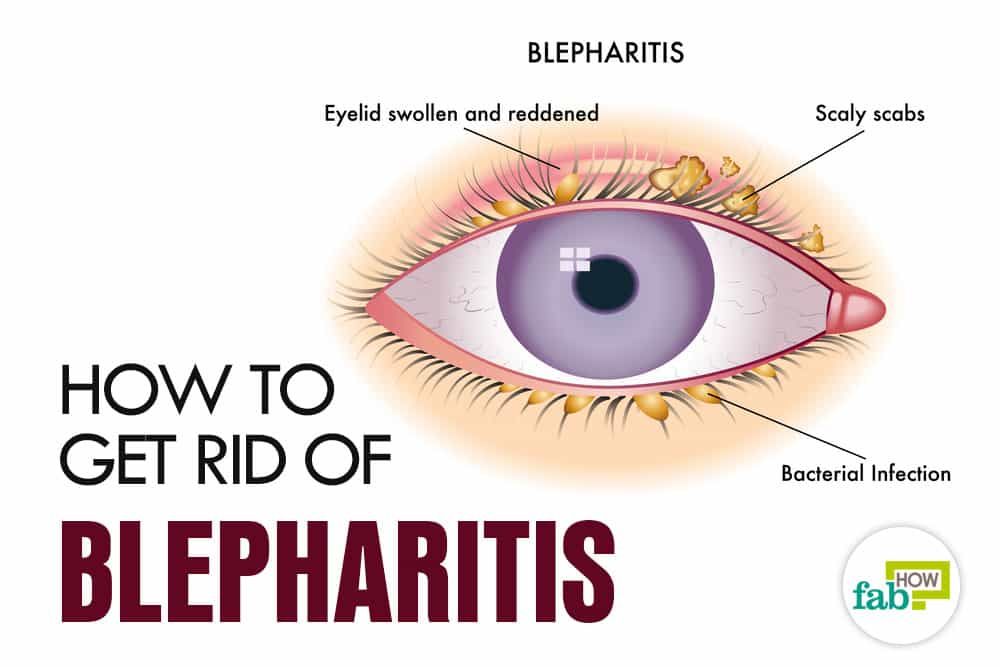How to Treat Eyelid Swelling: Inflammation, Infections, Causes, and Treatment
What causes eyelid swelling? How can you treat it? Explore the various reasons for inflamed, sore, and swollen eyelids, including infections, allergies, lack of sleep, and more. Get information on effective treatments and home remedies.
Causes of Eyelid Swelling
Eyelid swelling can have a variety of causes, ranging from mild to severe. Some of the common reasons for sore, swollen eyelids include:
Bacterial Infections
Bacterial infections caused by bacteria like Haemophilus influenzae, Staphylococcus aureus, Pseudomonas aeruginosa, and Streptococcus pneumoniae can lead to painful, swollen, red, and tender eyelids. Treatments typically involve antibiotic eye drops and oral medications.
Viral Infections
Viral infections from adenoviruses, herpes, and others can cause eyelid soreness, watery discharge, pain, redness, and inflammation. Treatments may include steroid eye drops, artificial tears, antihistamines, decongestants, and prescription eye drops.

Allergies
Allergies to pollen, dust, animal dander, and other environmental factors can trigger the immune system and cause eyelid redness, burning, swelling, itchiness, and watery discharge. Common treatments include eye drops, antihistamines, and decongestants.
Lack of Sleep
Not getting enough sleep can lead to eye spasms and dry eyes, which can affect the eyelids. Developing healthy sleep habits can help alleviate this issue.
Exposure to Elements
Being exposed to the sun, wind, chemicals, smog, or smoke can irritate the eyes and eyelids, causing pain, redness, swelling, or itchiness. Avoiding triggers and using eye drops can provide relief.
Types of Eyelid Conditions
Blepharitis
Blepharitis is a chronic condition characterized by eyelid inflammation due to clogged oil glands near the eyelashes. Symptoms include swollen and painful eyelids, loss of eyelashes, flaky skin, redness, and watery discharge.
Conjunctivitis (Pink Eye)
Conjunctivitis, or pink eye, can be viral, bacterial, or allergic in nature. Symptoms include redness, itchiness, discharge that forms crusts, watery eyes, and discomfort. Treatments may include eye drops, artificial tears, antihistamines, decongestants, and steroids.

Styes
Styes are red, swollen bumps that appear on the eyelids and usually contain pus. Symptoms include redness, itchiness, tenderness, watery eyes, and pain. Home remedies like warm compresses and medical treatments like antibiotic eye drops or creams can help.
Chalazia
Chalazia are small, painless bumps that form on the eyelids due to blocked oil glands. While they sometimes go away on their own or with warm compresses, medical intervention may be necessary in some cases.
Treating Eyelid Swelling
The treatment for eyelid swelling depends on the underlying cause. In general, some common treatment options include:
- Antibiotic eye drops or oral medications for bacterial infections
- Steroid eye drops, artificial tears, antihistamines, and decongestants for viral infections and allergies
- Warm compresses and good sleep hygiene for issues like lack of sleep or exposure to elements
- Consistent use of warm compresses and potential medical treatments for chronic conditions like blepharitis and chalazia
If you have severe symptoms like severe pain, blurry vision, vision loss, nausea, or discharge, seek immediate medical attention, as these may indicate a more serious underlying issue.
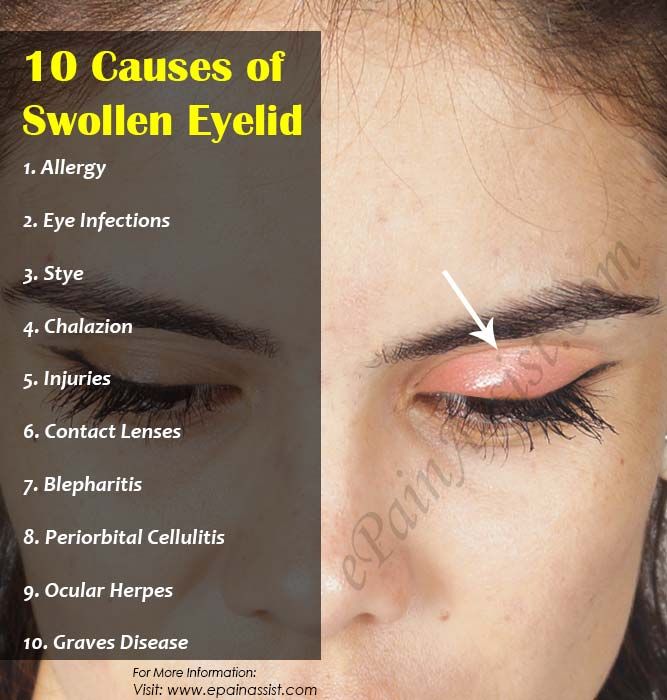
Preventing Eyelid Swelling
To help prevent eyelid swelling, consider the following strategies:
- Practice good eye hygiene, including properly cleaning and storing contact lenses
- Avoid rubbing or touching your eyes, as this can introduce bacteria and irritants
- Use sunglasses when outdoors to protect your eyes from the sun, wind, and other environmental factors
- Get enough sleep and rest to maintain eye health
- Manage any underlying conditions, such as allergies or blepharitis, with the help of your healthcare provider
When to See a Doctor
If your eyelid swelling is accompanied by severe symptoms or does not improve with home treatment, it’s important to see a healthcare provider. Potential signs that you should seek medical attention include:
- Severe pain
- Blurry vision or vision loss
- Seeing halos
- Nausea and vomiting
- Fever
- Discharge of blood or pus from the eye
- Inability to move the eye or keep it open
- Feeling that something is stuck in the eye or eyelid
Don’t wait to get help, as these symptoms may indicate a more serious underlying condition that requires prompt medical attention.

Conclusion
Eyelid swelling can have a variety of causes, ranging from mild to severe. Understanding the potential causes, such as infections, allergies, lack of sleep, and exposure to certain elements, can help you take appropriate steps to address the issue. Seeking medical attention for severe or persistent symptoms is crucial to prevent permanent vision damage or other complications.
Sore Eyelid: Causes, Treatments, and More
The most common symptoms of sore eyelids include:
- pain
- swelling
- redness
- irritation
- inflammation
- discharge
- itchiness
Symptoms that indicate a more serious problem include:
- severe pain
- blurry vision
- vision loss
- seeing halos
- nausea and vomiting
- fever
- blood or pus discharge from the eyes
- not being able to move the eye
- not being able to keep the eye open
- feeling that something is stuck in the eye or eyelid
If you have serious symptoms, seek immediate medical help or talk to a doctor about your sore eyelids. Don’t wait to get help because your vision may be affected permanently. Here are some eye emergencies that require immediate medical attention.
Sore eyelids have many causes that range from mild to serious. Most are treatable and may go away quickly. Sometimes treatment may take longer.
1. Bacterial infections
Bacterial infections can lead to sore eyelids. Haemophilus influenzae, Staphylococcus aureus, Pseudomonas aeruginosa, and Streptococcus pneumoniae are among the more common types of bacteria responsible for such infections. Symptoms include painful, swollen, red, and tender eyelids.
Typical treatments for bacterial infections are antibiotic eye drops and oral medications.
2. Viral infections
Viral infections can be caused by adenoviruses, herpes, and others. You may have:
- eyelid soreness
- watery discharge
- pain
- redness
- inflammation
Treatments may include steroid eye drops, artificial tears (Visine Tears, TheraTears, Refresh), antihistamines, decongestants, and eye drops your doctor prescribes.
3. Allergies
Allergies can irritate your eyes and cause eyelid soreness. This happens because pollen, dust, animal dander, and other environmental factors trigger the immune system. Your body releases histamine as a response, so you may have:
Your body releases histamine as a response, so you may have:
- redness
- burning
- swelling
- itchiness
- watery discharge
Common treatments include eye drops, antihistamines, and decongestants. Home treatments include wearing sunglasses while outside and applying a cool, wet washcloth over your eyes.
4. Lack of sleep
Not getting enough sleep can affect your eyelids and eyes. You may have eye spasms and dry eyes because you aren’t getting enough rest. Your eyes need sleep to replenish and have fluid circulation. Try these simple strategies and habits to help you get the rest you need.
5. Exposure to certain elements
Being exposed to certain elements such as the sun, wind, chemicals, smog, or smoke can cause eyelid soreness. This happens because these elements can irritate your eyes and eyelids or trigger an immune response. You may have pain, redness, irritation, swelling, or itchiness.
Treatment generally includes avoiding the triggers and using eye drops. Wearing sunglasses while outside can help shield your eyes from sun, dust, and wind.
Wearing sunglasses while outside can help shield your eyes from sun, dust, and wind.
6. Blepharitis
Blepharitis is eyelid inflammation caused by clogged oil glands near the eyelashes. Symptoms include:
- swollen and painful eyelids
- loss of eyelashes
- flaky skin on the eyelids
- redness
- watery discharge
- sensitivity to light
This is a chronic condition that doesn’t always respond to treatment, though applying a warm compress at home may reduce inflammation. See your doctor if this persists, because you may need antibiotics, steroid eye drops, or ointments.
7. Conjunctivitis
Conjunctivitis is commonly known as pink eye and can be viral, bacterial, or allergic. Symptoms include:
- redness
- itchiness
- discharge that forms crusts
- watery eyes
- discomfort in the eyes
Common treatments include eye drops, artificial tears, antihistamines, decongestants, and steroids.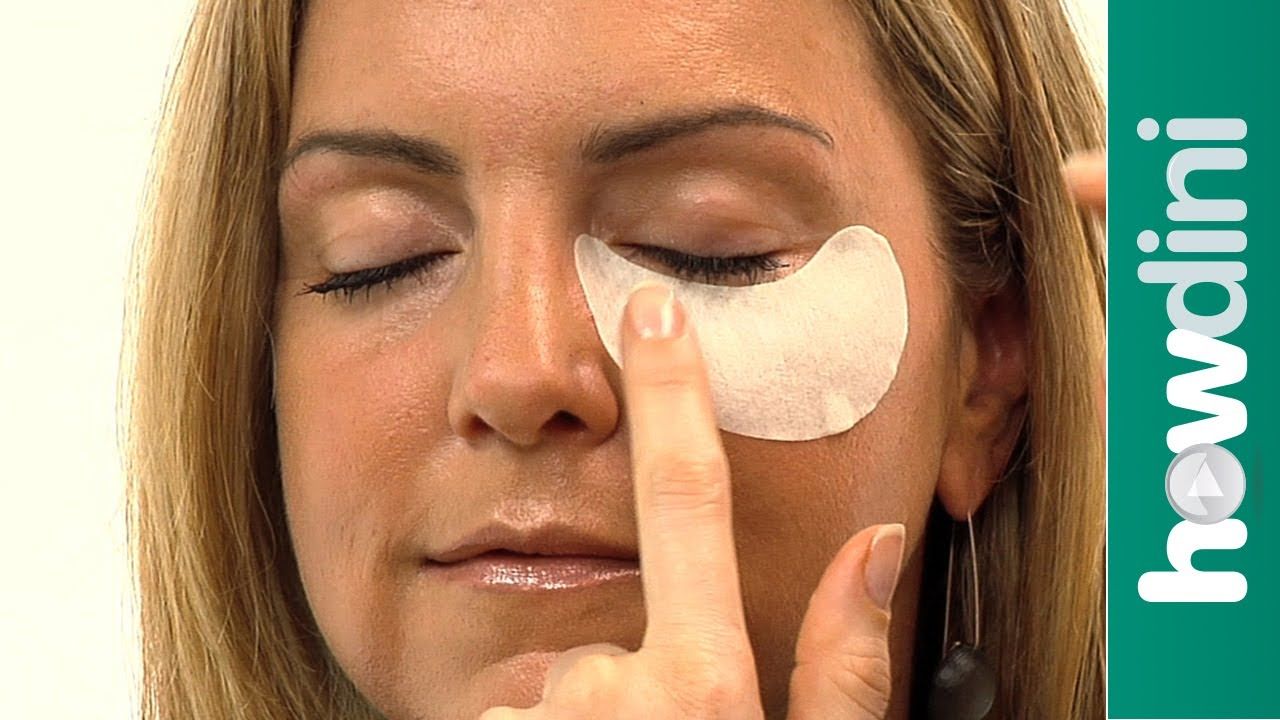 Keeping the affected eye clean and applying a warm compress can help resolve the issue. In rare cases, your doctor may prescribe antibiotics. Learn more about home remedies and medical treatments for pink eye.
Keeping the affected eye clean and applying a warm compress can help resolve the issue. In rare cases, your doctor may prescribe antibiotics. Learn more about home remedies and medical treatments for pink eye.
8. Styes
Styes are red, swollen bumps that appear on top of your eyelids. They usually have pus inside of them. Symptoms include:
- redness
- itchiness
- tenderness
- watery eyes
- pain
- swelling
You can apply a warm washcloth several times a day as a home remedy. Other treatments include antibiotic eye drops or creams and oral antibiotics. In rare cases, you may need surgery to drain the pus from the sty. Learn about eight of the best sty remedies.
9. Chalazia
Chalazia are small bumps that appear on the eyelids. They can show up on the upper or lower eyelids, but they’re often on the inside of the lid. A chalazion usually happens because oil glands are blocked in the eyelid.
Chalazia aren’t painful, but you may have redness and swelling. While they sometimes go away without treatment or with daily application of a warm compress, other times medical intervention is required.
While they sometimes go away without treatment or with daily application of a warm compress, other times medical intervention is required.
10. Contact lens wear
Wearing contact lenses can irritate the eyes and cause eyelid soreness. Dirty lenses can lead to infections and other problems. A torn or damaged contact lens can also cause pain and irritation. You may have redness, swelling, irritation, and pain. Make sure you clean your contact lenses well and never wear damaged ones. Avoid these common contact lens slip-ups to keep your eyes at their healthiest.
11. Orbital cellulitis
Orbital cellulitis is a bacterial infection that affects the tissues around your eyes. It causes:
- painful eyelid swelling
- bulging eyes
- vision problems
- red eyes
- fever
- problems moving the eyes
This is a serious infection that may require a hospital stay and antibiotics administered through an intravenous (IV) line.
12.
 Periorbital cellulitis
Periorbital cellulitis
Periorbital cellulitis is an infection that affects the eyelids and skin around the eyes. It can be caused by viruses or bacteria. It often happens after a cut or other injury near the eyes. Symptoms include eyelid swelling, soreness, and redness. Treatment includes oral antibiotics or IV antibiotics.
13. Ocular herpes
Herpes viruses can affect the eyes and eyelids. Symptoms include:
- watery eyes
- swelling
- irritation
- redness
- sensitivity to light
- feeling that something is stuck in the eyes
Treatment includes steroid eye drops, antiviral eye drops, pills, and ointments. Surgery may be necessary in rare cases that involve scarring of the cornea. Learn about a different but similar-sounding condition, herpes zoster ophthalmicus or shingles in the eye.
14. Crying
Crying can make your eyes and eyelids red or swollen. Home remedies include not rubbing your eyes, washing your face with cold water, and using cold compresses.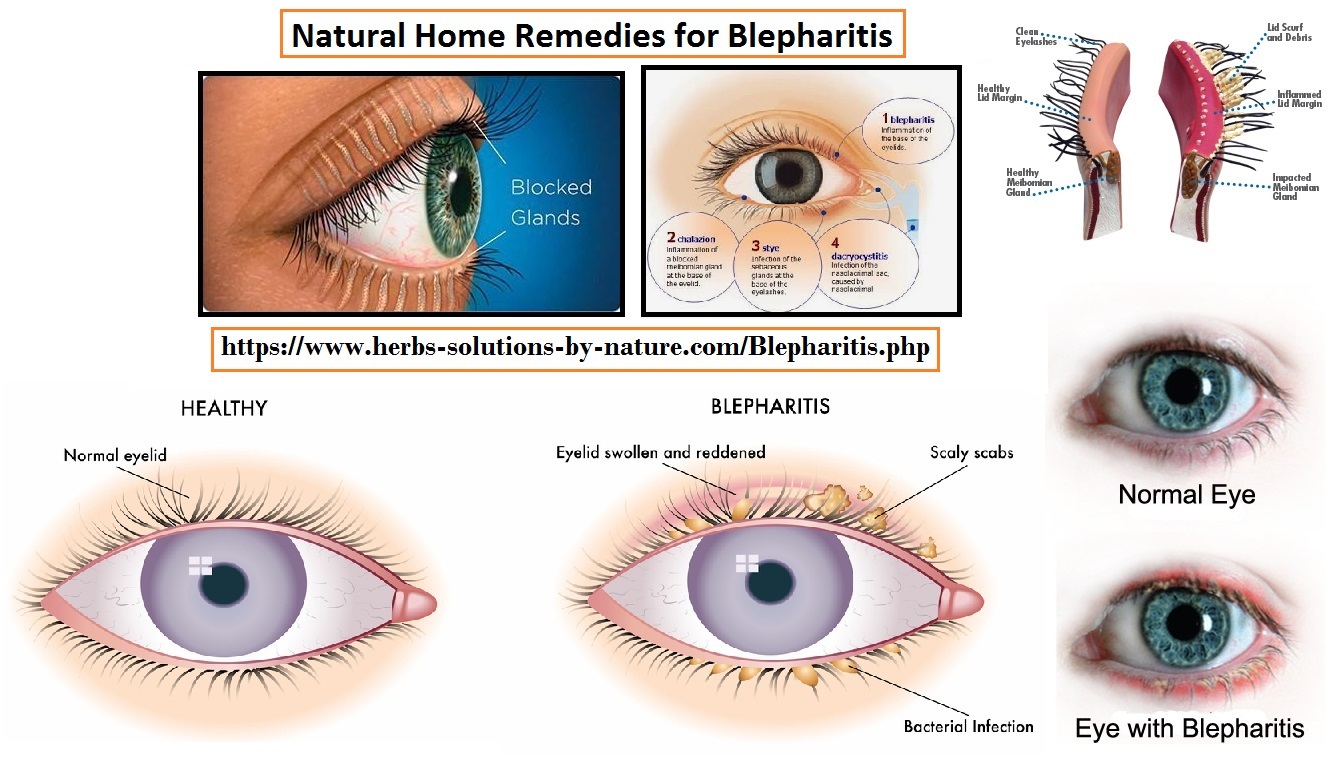 If your eyes are puffy, these tips may help.
If your eyes are puffy, these tips may help.
15. Other trauma
Other traumas can include injuries, burns, scratches, and cuts. You may have pain, redness, swelling, irritation, and other symptoms.
Chemical burns and deep puncture wounds require immediate medical attention.
Treatment will depend on the type of trauma or injury and may include surgery, eye drops, and medication. You may find these first aid tips helpful, but also seek medical help promptly.
16. Dry eyes
Dry eyes mean you have a less than normal production of tears. They have many causes including allergies, environmental or external factors, and medical conditions. You may experience such symptoms as:
- soreness
- pain
- itchiness
- burning
- redness
- swelling
Treatment includes artificial tears, eye drops, eliminating the triggers, antibiotics, and punctal plugs. Home remedies including warm washcloths over the eyelids. Here are some additional home remedies to try.
17. Excessive computer use
Excessive computer use can cause dry eyes and irritation. You may have eyestrain and pain. Symptoms can include:
- dryness
- irritation
- pain
- blurry vision
- redness
- double vision
Treatments include reducing computer use and glare, taking breaks by following the 20-20-20 rule, blinking more often, and using eye drops.
You should see a doctor if you have pain or swelling in your eyelids for more than 24 hours, and symptoms continue to get worse. You should also see a doctor if you have blurry vision, fever, nausea, vomiting, eye trauma or injury, vision problems, or other serious symptoms.
Your doctor will discuss your symptoms and medical history, and do an eye exam. Tests may include:
- slit lamp exam
- corneal topography
- fluorescein angiogram
- dilated pupil exam
- refraction test
- ultrasound
There are many things you can do to prevent eyelid soreness and maintain the health of your eyes, including:
- avoiding eye allergens and other triggers
- getting regular eye exams
- blinking regularly
- following the 20-20-20 rule for using screens
- avoiding touching or rubbing the eyes
There are many causes for sore eyelids, but most are treatable.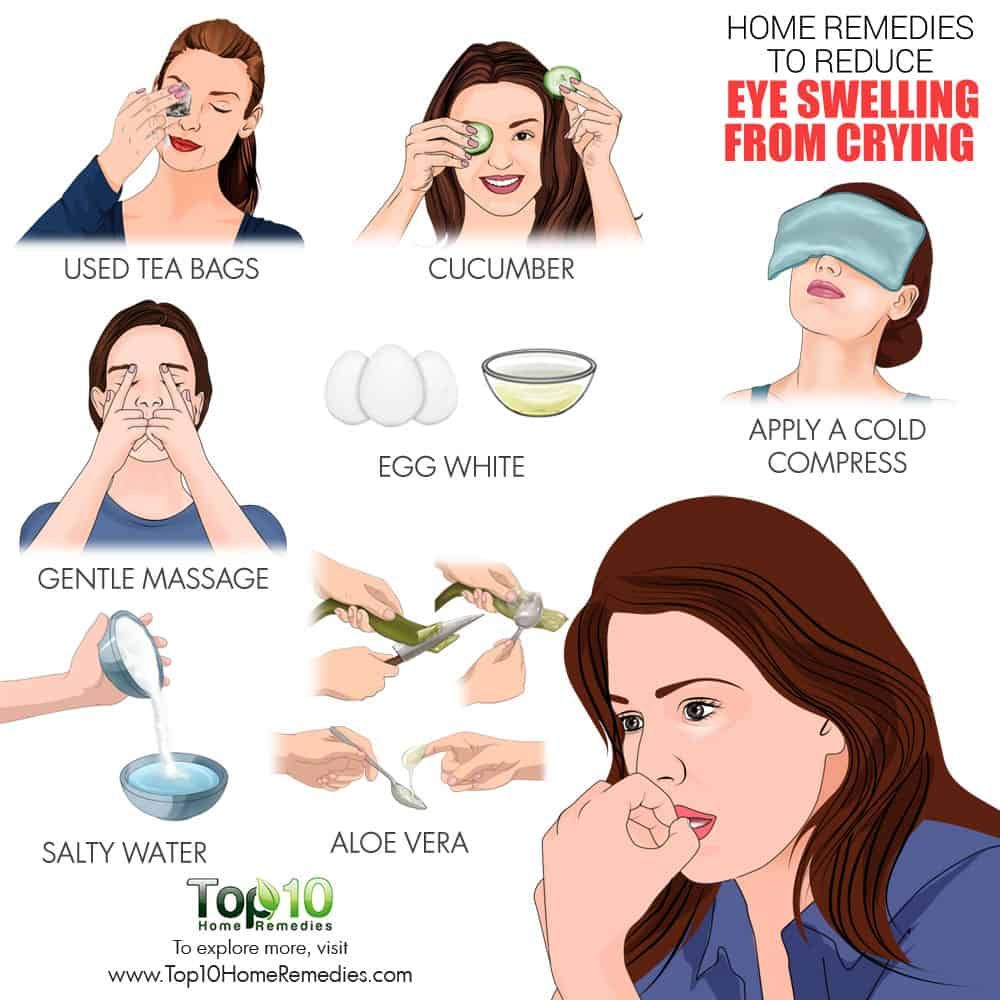 Talk to your doctor about your sore eyelids and get help if the treatments aren’t working.
Talk to your doctor about your sore eyelids and get help if the treatments aren’t working.
12 Causes, Treatment, And More
What Is a Swollen Eyelid?
Eyelid swelling occurs when the area around your eyes fills up with fluid, making them appear puffy. Eyelid edema is the medical term for fluid retention in the eyelid.
Swollen eyelids can result from a lack of sleep or may be a sign of a medical condition. Infections, trauma, and eye diseases can lead to swelling in the eyelid.
Eyelid swelling can occur in one or both eyes. You may also experience pain, itching, or eye irritation.
Keep reading to learn about common causes of swollen eyelids, including potential treatments and when to see a doctor.
12 Causes of Swollen Eyelids
There are many reasons why your eyelids may be swollen. Eyelid swelling is often a sign of another medical condition, such as:
1. Eye Allergies
Allergic reactions trigger a histamine release in your body, which causes redness, itching, and swelling.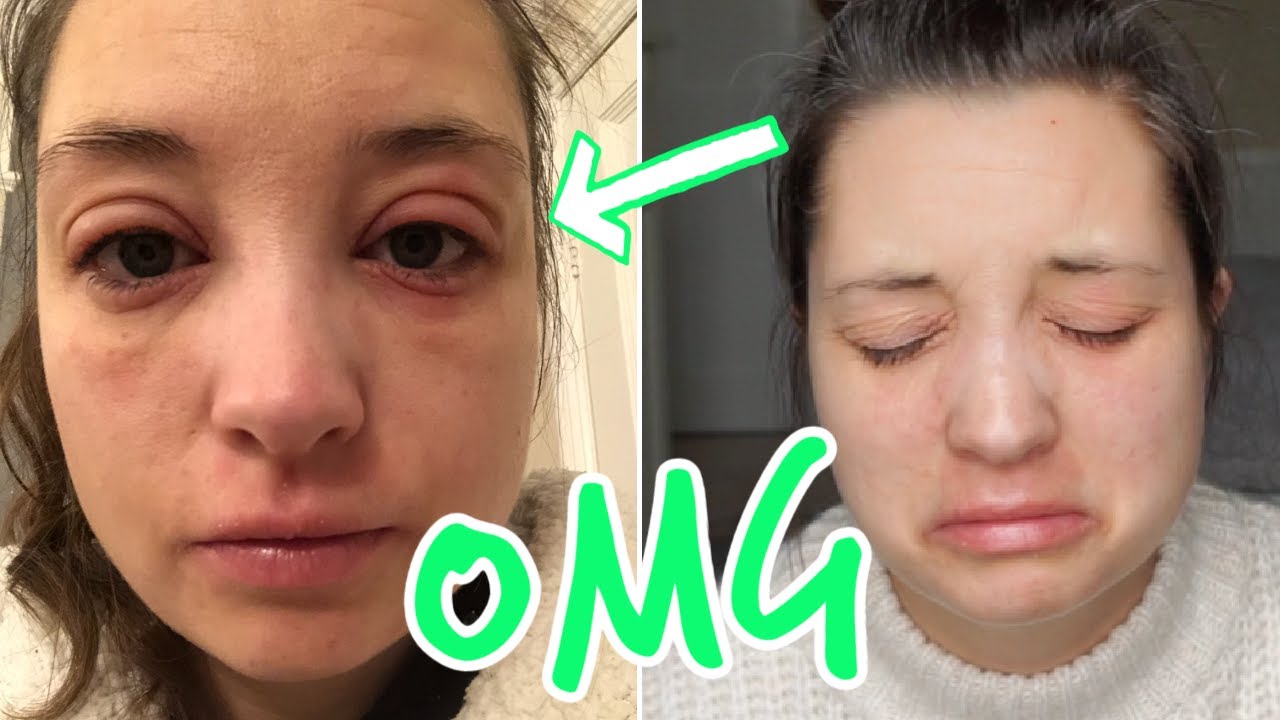 Because the eyelid skin is so sensitive, an allergic reaction can lead to severe inflammation.
Because the eyelid skin is so sensitive, an allergic reaction can lead to severe inflammation.
Common causes of eye allergies include:
- Seasonal allergies (hay fever)
- Chemicals in personal care products and makeup
- Dust
- Pet dander
- Smoke
- Perfumes
- Foods
Symptoms
Common eye allergy symptoms include:
- Pink or red eyes
- Eye pain in one or both eyes
- Puffy eyelid
- Itchiness in the eyes
- A burning sensation in the eyes
- Teary eyes
- Sensitivity to light
Treatment
Treatment options for eye allergies include:
- Cool compresses. To reduce swelling and relieve itching
- Antihistamines. Such as diphenhydramine (Benadryl)
- Artificial tears. To soothe itching and dryness
- Prescription medications. Oral allergy medicine or eye drops
2.
 Conjunctivitis (Pink Eye)
Conjunctivitis (Pink Eye)
Conjunctivitis is inflammation of the conjunctiva — the thin tissue that lines your eyelids and the white of your eye. The condition can affect one or both eyes.
Potential causes include:
- Adenovirus infection
- Bacterial infection
- Allergic reaction
Symptoms
A swollen eyelid is a common symptom of pink eye. Other symptoms include:
- Pink or red eyeball
- Itching
- Pain or discomfort
- Eye discharge
Treatment
Infectious viral conjunctivitis is very contagious and requires professional medical attention.
Depending on the cause, conjunctivitis treatment may include:
- Cool compress
- Artificial tears
- Antibiotics
- Antiviral therapy
- Antihistamines
3. Ocular Herpes
Eye herpes, sometimes termed ocular herpes, may produce painful sores on the eyelid or the eye surface.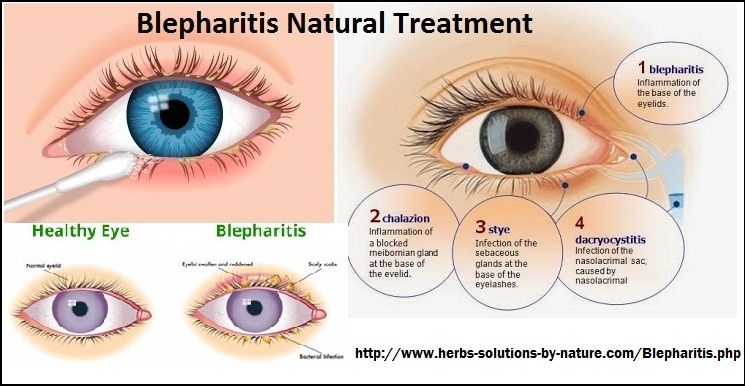 Both the cornea and the eyelid may be affected.
Both the cornea and the eyelid may be affected.
Symptoms
Symptoms of ocular herpes include:
- Eyelids stuck together with mucus in the morning
- Swollen eyelids
- Red, itchy, and irritated eyelids
- Painful sores on the eyelid or surface of the eye
Treatment
Ocular herpes requires professional medical treatment, which may include:
- Prescription eye drops containing steroids, antibiotics, or both
- Antiviral medications
- Lubricating eye drops to alleviate dry eye
4. Cellulitis
Cellulitis causes severe swelling and calls for emergency medical care.
Two major kinds of cellulitis cause eyelid swelling:
- Orbital cellulitis. It is linked to a sinus infection that spreads to the tissues behind the eye
- Preseptal cellulitis, also called periorbital cellulitis. An infection of the eyelid skin
Symptoms
People suffering from orbital cellulitis may experience a bulging eye and pain while shifting their eyes back and forth.
Other symptoms include:
- Eyelid swelling
- Redness
- Pain
- Double vision
- Blurry vision
Treatment
Treatment includes antibiotic therapy targeting the bacteria. Symptoms often improve within 24 to 48 hours.
5. Graves’ Disease
Graves’ disease is a thyroid problem that can cause the eyelids to swell or bulge out of the sockets.
According to research, hyperthyroidism (high levels of thyroid hormones) can cause the eyes to swell or seem puffy.4 This is because the condition affects muscles and tissues around the eye.
Symptoms
Symptoms include:
- Eyes bulging from the eye socket
- Red, irritated eyes
- Double vision or reduced vision
- Sensitivity to light
- Gritty sensation in the eyes
- Pressure or pain in the eyes
Treatment
Treatment options include:
- Artificial tears or eye drops
- Oral steroids
- FDA-approved Tepezza, which reduces eye protrusion5
- Radiation therapy
- Orbital decompression surgery to fix bulging eyes
6.
 Chalazion
Chalazion
A chalazion is a small lump on the inner rim of the upper or lower eyelid. It’s usually painless but can cause redness and swelling.
People with the skin condition rosacea have a higher risk of developing chalazia.
Symptoms
Additional symptoms include:
- Swelling that may affect the entire eyelid
- Redness
- Blurry vision
- A hard lump on the eyelid
Treatment
Most cases of chalazia are treated at home. You can do the following:
- Apply a wet washcloth to the eye several times a day
- Practice good hygiene in the affected area
- Gentle eyelid massage
Call your doctor if the bump doesn’t go away after a few days or if there are signs of infection, such as fever.
7. Stye
A stye or hordeolum is a sensitive red lump caused by inflammation of the eyelash follicles.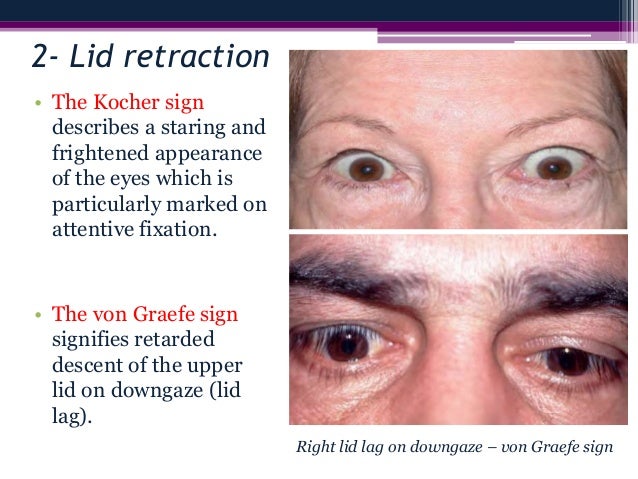 It looks and feels like a small pimple. Without treatment, a stye can develop into a chalazion.
It looks and feels like a small pimple. Without treatment, a stye can develop into a chalazion.
Symptoms
Symptoms of a stye include:
- Swelling and redness
- Eye crusting and discharge
- Scratchy sensation
- A painful pimple-like lump that feels better once it drains
Treatment
Treatment options include:
- Warm compress
- Gentle eyelid massage
- Eye drops and other antibiotic ointments
Consult your healthcare professional if your stye lasts longer than a week despite home remedies.
8. Blepharitis
Blepharitis is eyelid inflammation. Blepharitis causes the eyelid margins to swell, flake, and scale. It’s caused by an overgrowth of bacteria usually present on the eyelids.
According to the National Eye Institute, there are two types of blepharitis:9
- Anterior blepharitis. Affects the exterior eyelid where eyelashes attach
- Posterior blepharitis.
 Affects the inner edge of the eyelid, including the oil glands
Affects the inner edge of the eyelid, including the oil glands
Symptoms
Blepharitis symptoms include:
- Crusted eyelid margins
- Dry eyes
- Loss of eyelashes
- Watery eyes
- Itchy and gritty feeling in the eyes
- Eye discharge
- Red or sore eyes
- A build-up of eyelid debris
- Blurred vision
Treatment
It’s essential to keep the eyelids clean during a blepharitis flareup.
Treatment options include:
- Warm compresses
- Washing the eyelid with a cotton swab soaked in water and diluted baby shampoo
- Gentle eyelid massage
- Topical steroids
- Topical antibiotics
- Eyelid scrubs
- Pulsation therapy to remove debris from oil glands
9. Eye Trauma
Skull fractures, burns, direct impact, foreign objects in the eye, and surgery may cause eyelid swelling.
A qualified healthcare professional should always examine eye injury to rule out any potential dangers.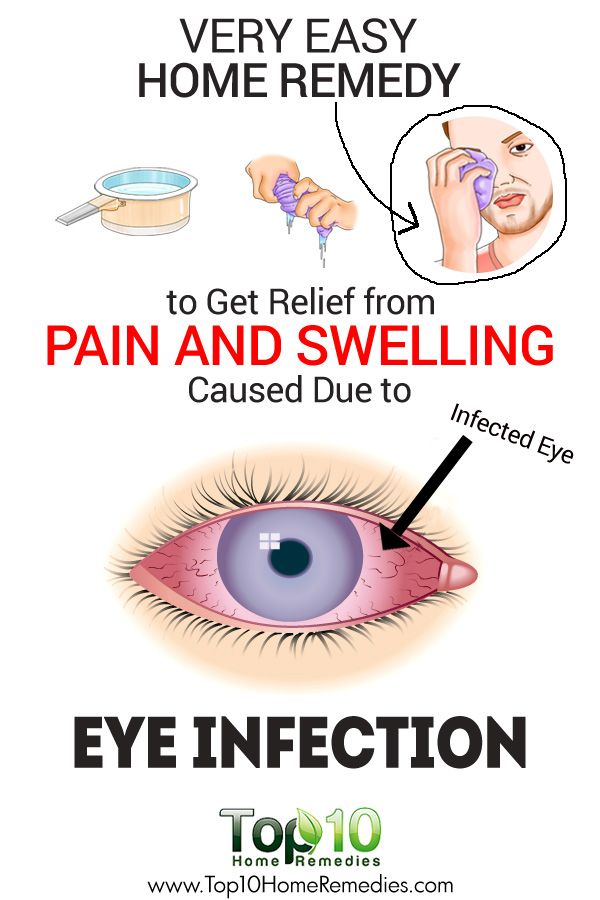
Symptoms
People with an eye injury may experience:
- Pain and swelling of the eye
- Loss of vision
- Cut, torn, or inflamed eyelids
- Unusual pupil shape
- Reddening of the eyes
- A gritty feeling in the eyes
Treatment
Treatment depends on the type of injury and may include:
- Gentle cold compress
- Eye flushing to remove any chemicals or irritants
- Eye drops to help with healing
- An eye patch to cover the eye while it’s healing
10. Fatigue
Lack of sleep is a common cause of swollen eyelids and bags under the eyes. Fatigue is the likely culprit if you wake up with puffy eyes after a poor night’s sleep.
Symptoms
Other symptoms of fatigue include difficulty concentrating, irritability, and headaches.
Treatment
Applying a cold compress can alleviate eyelid swelling due to fatigue. However, a better solution is to prevent fatigue by getting enough sleep.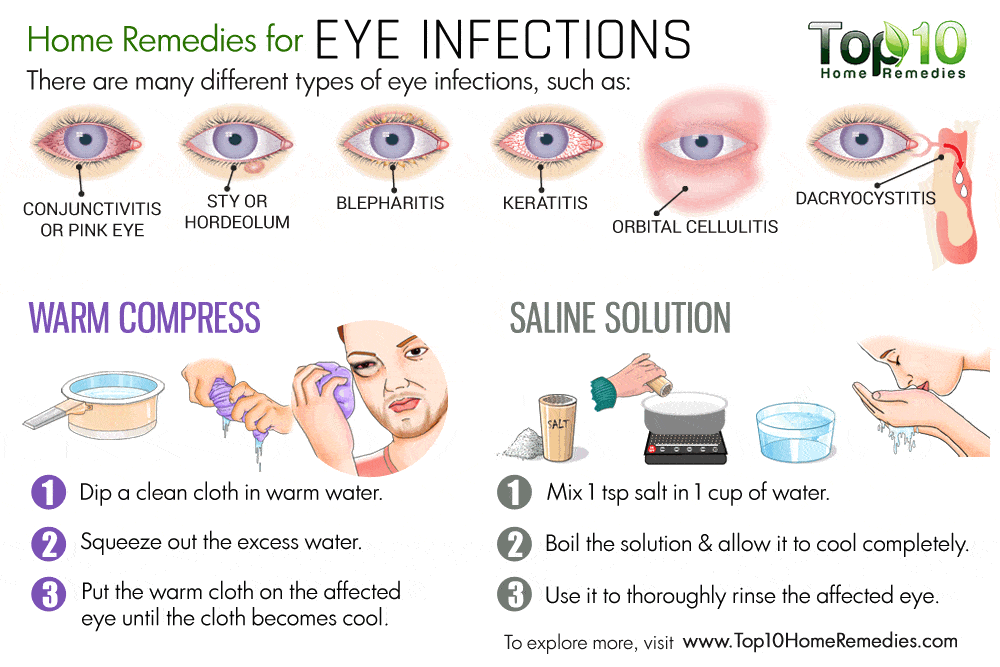 Most people need 7 to 9 hours a night.
Most people need 7 to 9 hours a night.
11. Fluid Retention
Eyelid edema is fluid retention around the eyes. It can be a sign of an underlying health condition, such as:
- Heart failure
- Lymphedema
- Thyroid problems
- Liver or kidney disease
- Obstructive sleep apnea
Symptoms and treatment of fluid retention vary based on the underlying cause.
12. Eye Cancer
Although rare, eye cancer is associated with swelling of the eyelids. Eye cancer is an abnormal growth of cells in the eyes, resulting in a tumor.
Many types of cancer can affect the eyes, including lymphoma, melanoma, and squamous cell carcinoma.
Symptoms
Symptoms of eye cancer may include:
- Blurred vision
- Swollen eyelids
- Bulging of the affected eye
- Partial or total loss of vision
- Persistent eye irritation
- A lump on the eyelid or in the eye that grows larger
- Floaters, shadows, or flashes of light
- Pain in or around the eye (rare)
Treatment
Treatment options include:
- Radiotherapy
- Chemotherapy
- Surgical removal of the tumor
When to See a Doctor
If your eyelid remains swollen for more than 48 hours, seek immediate medical attention.
Eyelid swelling with certain symptoms may indicate a more serious underlying condition. Contact your healthcare provider right away if you experience:
- Sudden vision loss
- Painful eye movements
- Swelling after head trauma
- Anaphylaxis symptoms such as swelling of the tongue, lips, and mouth
- Bulging eyes
- Severe headache
- Stiff neck
- Severe fever (higher than 101 degrees Fahrenheit)
A physician or eye doctor will diagnose your condition and prepare you for treatment. If the reason for the swollen eyelid is severe enough, they may refer you to an ophthalmologist.
Treatment Options for Swollen Eyelids
You can treat most cases of eyelid swelling at home with easy home treatments such as cold compresses. Medical treatment may be necessary in some cases.
Home Remedies
Common home remedies for swollen eyelids include:
- Gently clean the eyelid skin using water and baby shampoo, then pat the area dry
- Use artificial tears to rinse and lubricate dry eyes
- Apply a cool compress or cold pack
- Use a cotton swab or clean fingertip to apply a gentle massage
- Rest with your head elevated to drain fluids away from the eyes
- Avoid wearing contact lenses until your swollen eyelids fully recover
Medical Treatments
Common medical treatments for swollen eyelids include:
- Allergy treatments.
 Allergy shots and prescription medicines
Allergy shots and prescription medicines - Antibiotic eye drops. For bacterial infections
- Antiviral eye drops. For viral eye infections such as herpes
- Corticosteroids. To ease inflammation
- Incision and drainage. Of styes and chalazia
- Epinephrine injection. In cases of anaphylaxis
- Surgery. To remove foreign objects, tumors, or growths
How to Prevent Eyelid Swelling
It’s not always possible to prevent a swollen eyelid. However, you may be able to reduce your risk by taking the following steps:
- Treat your allergies
- Wash your hands with soap and warm water before touching your eyes
- Use hypoallergenic makeup and skin care products
- See your eye doctor for regular checkups
- Handle your contact lenses with care
Outlook
Eyelid swelling usually goes away within 24 to 48 hours.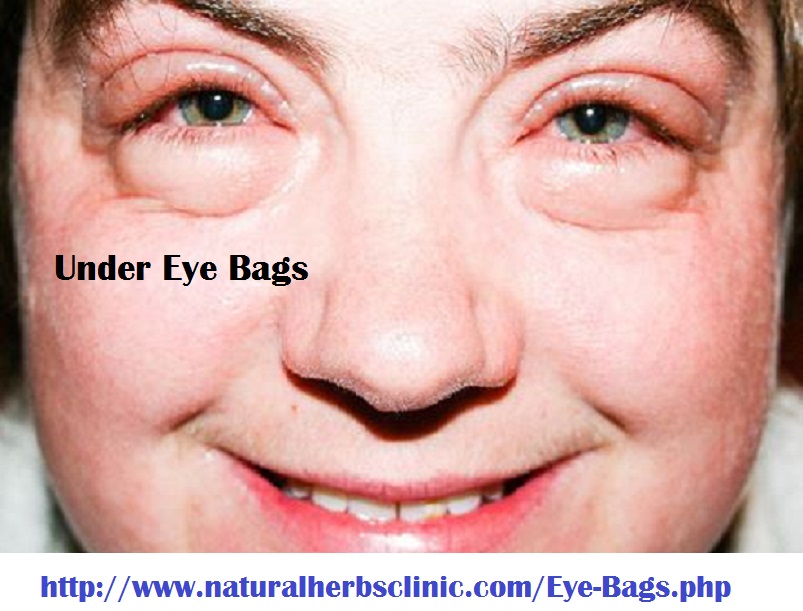 However, if an underlying condition causes the swelling, treatment may be required to address that condition.
However, if an underlying condition causes the swelling, treatment may be required to address that condition.
Summary
Many things can cause a swollen eyelid, including lack of sleep, eye diseases, and trauma. Swelling that’s severe or lasts more than two days may be a sign of a medical condition that needs treatment.
Seek emergency medical attention if you experience eyelid swelling, sudden vision changes, high fever, or pain when moving your eye.
Don’t hesitate to call your healthcare provider if you’re unsure whether eyelid swelling is a cause for concern.
In this article
Eyelid edema – causes and treatment in the CIM
The nature of eyelid edema can be inflammatory and non-inflammatory. Inflammatory edema is associated with severe reddening of the skin, local fever, pain on pressure. Often, palpation of the edematous eyelid may reveal soreness and induration (with barley, dacryocystitis, furunculosis, erysipelas). Non-inflammatory swelling of the eyelids, characteristic of diseases of the cardiovascular system or kidneys, and are always bilateral, more pronounced in the morning and almost always combined with swelling of the legs or ascites.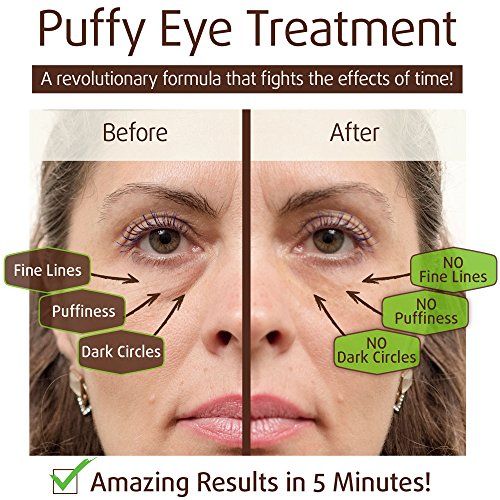
Causes of eyelid edema
Often, eyelid edema becomes one of the first signs of disease, which indicates the need for an early examination. Allergic eyelid edema may be a manifestation of angioedema, with a characteristic sudden onset and rapid disappearance. Such edema is usually unilateral, very significant, developing on the upper eyelid, but not accompanied by any subjective sensations. Its cause is an allergic reaction that has developed under the influence of an allergen, for example, foods: eggs, milk, chocolate, citrus fruits, strawberries, various types of fish products, some flowers and other specific or non-specific irritants, as well as some drugs and cosmetics.
In addition, swelling of the eyelids causes diseases of the kidneys, heart, liver and connective tissues. Diseases of the eyelids and orbits may also be accompanied by edema. With diseased kidneys, edema appears on the face and especially on the upper eyelids. Often, renal edema is very watery.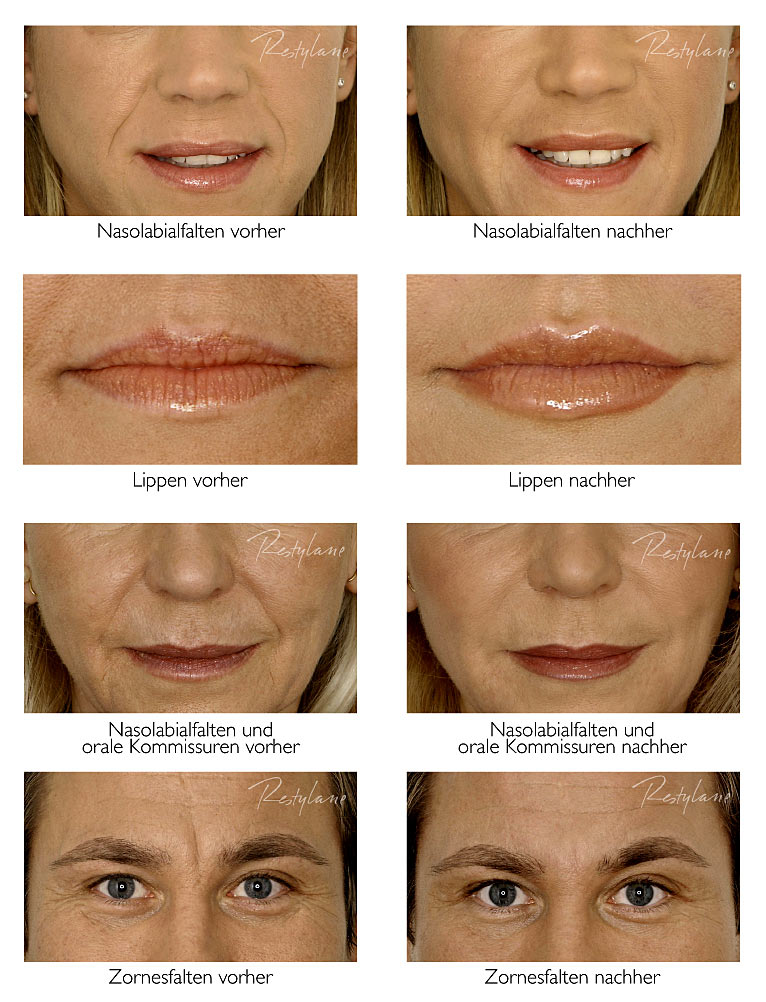
In some cases, edema in the upper eyelids is due to tumors of the eyelids, including squamous cell carcinoma, or disorders in which edema is not a symptom – trauma, burn, fracture of the base of the skull, condition after surgery. Today, a fairly significant number of causes of swollen eyelids are known. But it is absolutely certain that edema has nothing to do with prolonged work at the computer and eye strain.
Swelling of the upper eyelids is sometimes confused with blepharochalasis – the formation of a somewhat sagging skin fold on the outside of the upper eyelid. Blepharochalasis, as a rule, occurs in older people and is associated with age-related weakening of the connective tissues of the upper eyelid. It is more of a cosmetic problem and can be corrected with cosmetic surgery.
Diagnosis
During the examination, the doctor will determine if there is a temperature increase at the site of swelling, if there is erythema and pain, unilateral or bilateral edema. Bilateral, painless and non-reddening swelling suggests allergy, orbital fat herniation, or systemic disease. Bilateral painless edema and localized redness suggest blepharitis, conjunctivitis, or burns, although these diseases also cause unilateral edema. Unilateral swelling without pain and with redness may be due to an insect bite, subcutaneous cellulitis, or a disease of the lacrimal system (for example, canaliculitis or dacryoadenitis). Unilateral painful edema with erythema suggests orbital cellulitis.
Bilateral, painless and non-reddening swelling suggests allergy, orbital fat herniation, or systemic disease. Bilateral painless edema and localized redness suggest blepharitis, conjunctivitis, or burns, although these diseases also cause unilateral edema. Unilateral swelling without pain and with redness may be due to an insect bite, subcutaneous cellulitis, or a disease of the lacrimal system (for example, canaliculitis or dacryoadenitis). Unilateral painful edema with erythema suggests orbital cellulitis.
In most cases, the diagnosis is established clinically, therefore, there is no need to conduct an additional examination. Exceptions are injuries, cavernous sinus thrombosis, cellulitis and systemic diseases, for which special imaging methods are prescribed, as well as laboratory tests.
Eyelid edema treatment
Eyelid edema is treated by identifying and eliminating its cause. For the treatment of eyelid edema of an allergic nature, first of all, contact with the allergen is eliminated. The edema is directly treated with cold compresses and topical glucocorticoids (eg, 0.1% fluorometholone ointment) or systemic antihistamines.
The edema is directly treated with cold compresses and topical glucocorticoids (eg, 0.1% fluorometholone ointment) or systemic antihistamines.
Eyelid edema caused by an insect bite, which is characterized by the presence of a bite site – a pale papule with a punctate hemorrhagic center, does not need to be treated. It disappears on its own within a couple of days.
Since the main cause of swelling of the upper eyelids is an excess of fluid in the body, the use of diuretics is very appropriate for its treatment. In this case, you can not use medications, but use folk remedies – infusions, decoctions and teas.
When edema is caused by inflammation of the eyes or a cold, this condition is relieved by the introduction of antibacterial eye drops, which must necessarily contain a vasoconstrictor.
Edema, which appears from time to time due to non-compliance with the sleep regimen or our abuse, is easily removed by cosmetics – massage, masks, “washing” with ice.
In the Moscow Eye Clinic medical center, everyone can be examined using the most modern diagnostic equipment, and, based on the results, get advice from a highly qualified specialist. The clinic is open seven days a week and is open daily from 9h to 21 h. Our specialists will help to identify the cause of vision loss, and carry out competent treatment of the identified pathologies.
You can make an appointment at the “Moscow Eye Clinic” by phone in Moscow 8 (800) 777-38-81 and 8 (499) 322-36-36 (daily from 9:00 to 21:00 ) or by using the online registration form.
Causes, Symptoms and Treatments
Contents
- 1 Eyelid Swelling: Causes, Symptoms and Treatment
- 1.1 Understanding Eyelid Swelling
- 1.2 Eyelid types .2 Eye pressure measurement
- 1.5.3 Blood and urine test
- 1.5.4 Ultrasound
- 1.5.5 Computed tomography
- 1.6 How to avoid swelling of the eyelid?
- 1.
 7 How to treat eyelid edema
7 How to treat eyelid edema - 1.8 We treat eyelid edema with folk remedies!
- 1.8.1 Remedy 1: Parsley leaves
- 1.8.2 Remedy 2: Green tea compresses
- 1.8.3 Remedy 3: Vodka and honey wrap
- 1.9 How to quickly eliminate swelling of the eyelid 9 0046
- 1.9.1 Eyelid edema symptoms
- 1.9.2 Eyelid edema treatment methods
- 1.13.0.1 What is eyelid edema?
- 1.13.0.2 What are the symptoms associated with eyelid edema?
- 1.13.0.3 What are the causes of eyelid edema?
- 1.13.0.4 How can eyelid edema be treated?
- 1.13.0.5 How can eyelid edema be prevented?
- 1.13.0.6 When should I see a doctor if my eyelid is swollen?
Eyelid edema is a symptom that can occur due to many reasons: fatigue, allergies, heart disease, kidney disorders, hormonal changes.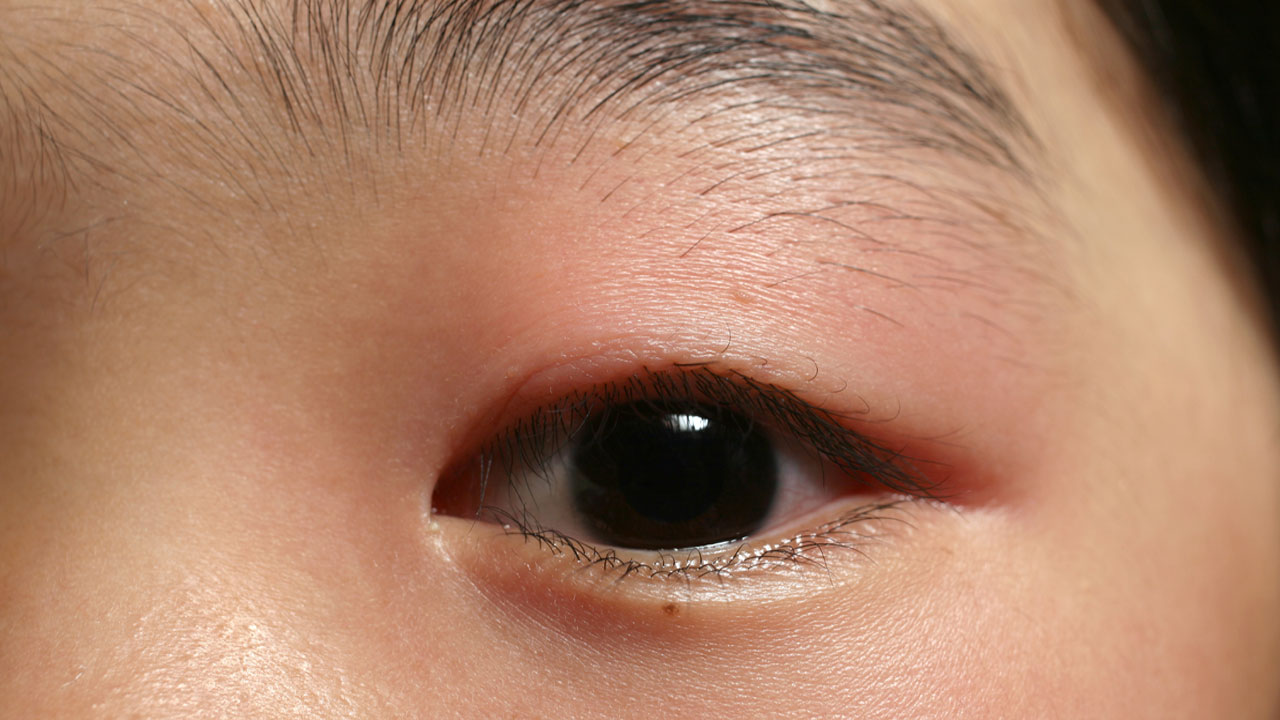 In the article you will find information about the causes of eyelid edema, methods for diagnosing and treating this condition.
In the article you will find information about the causes of eyelid edema, methods for diagnosing and treating this condition.
In our life, the appearance of various ailments is inevitable, including eyelid edema. This problem can appear in any person and unpleasantly affect the appearance and well-being.
Eyelid edema can occur for many reasons, from lack of sleep to more serious conditions. It is necessary to be able to recognize the symptoms and apply the correct methods of treatment in order to get rid of eyelid edema and avoid possible complications.
In this article we will consider the main causes of eyelid edema, signs of the disease and methods of its treatment. Our recommendations will help you preserve the beauty and health of your eyes and avoid possible troubles.
Understanding eyelid edema
Eyelid edema is a common condition characterized by swelling of the skin around the eyeball. Often this condition occurs in people with increased levels of fatigue and stress, as well as in those who abuse alcohol or take certain medications.
The main symptom of eyelid edema is swelling around the eyes, which can be unilateral or bilateral. Puffiness may increase in the morning or evening, and usually disappears on its own. However, if the swelling does not go away after a few days, be sure to see a doctor for medical help.
- Some of the common treatments for eyelid edema are:
- Finding the cause: If the swelling is due to some medication or other medical problem, you need to find it and treat it.
- Cold application: cooling masks can temporarily relieve inflammation and reduce eyelid swelling.
- Natural Methods: Various green teas, cucumber and other natural herbs can help reduce eyelid swelling.
- Avoid salty foods: they can increase swelling, so salty, fried and fatty foods should be avoided.
- Some of the common treatments for eyelid edema are:
Effective treatment of eyelid edema depends on its cause. Therefore, if the swelling continues for more than a few days, be sure to consult a doctor.
Types of eyelid edema
Eyelid edema can be caused by various causes and manifest itself in different forms. One type of eyelid edema is mechanical edema. It occurs when the eyelid is injured or bruised. In this case, the metabolism is disturbed and there is an accumulation of fluid and swelling of the tissues.
Infectious edema occurs as a result of an infection affecting the eye and eyelid. It is characterized by redness, severe swelling, and can cause pain and itching.
Table of types of eyelid edema Type of edema Cause of occurrence Characteristics
| Mechanical | Trauma, contusion | Fluid accumulation, tissue edema |
| Allergic | Allergen exposure, allergic drug reaction | Rapidly progressive edema |
| Infectious | Effects of infection on the eye and eyelid | Redness, severe swelling, pain and itching |
Determining the type of eyelid edema is an important step in the correct diagnosis and treatment of the disease.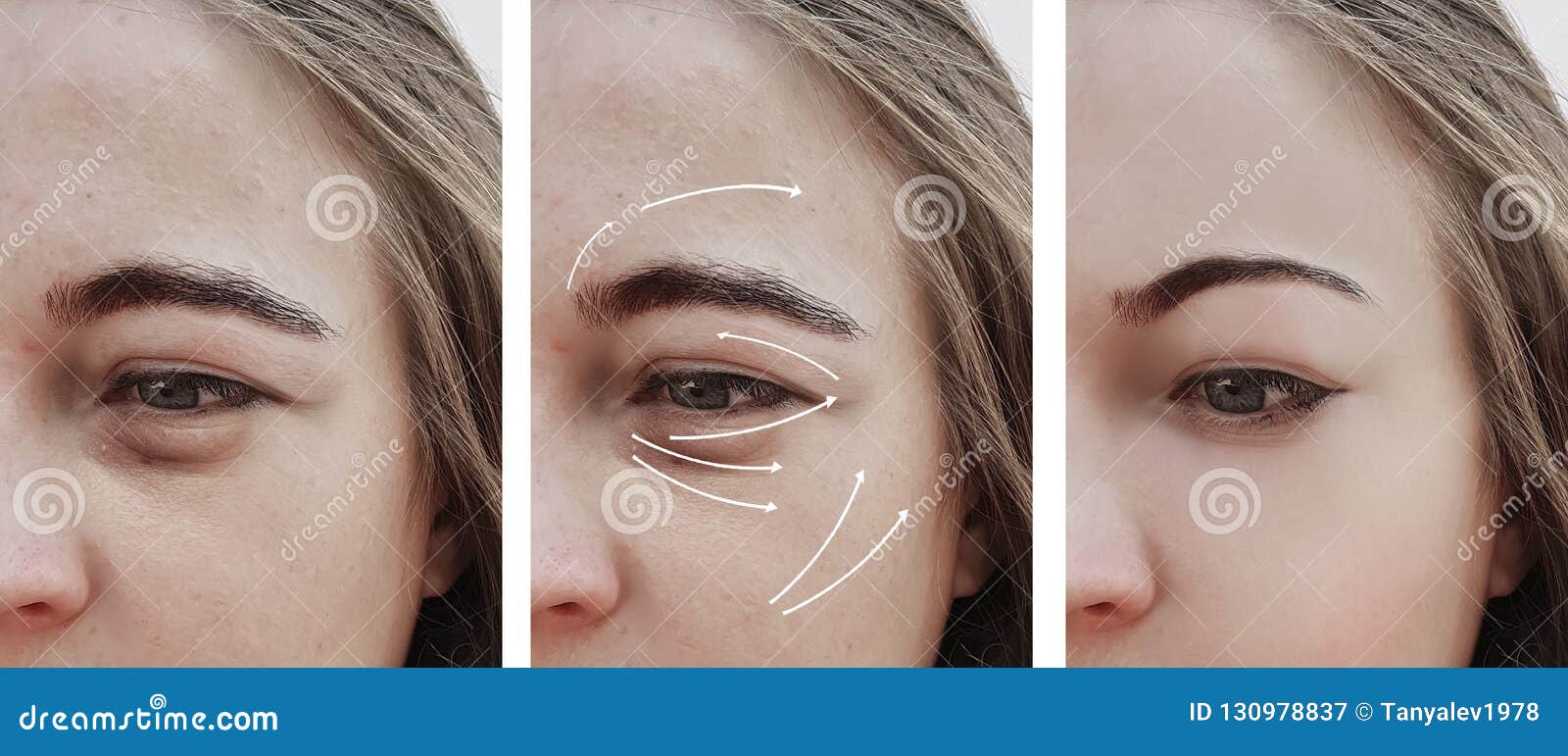 Studying the symptoms and contacting a specialist will help identify the cause of the edema and choose the most effective method of treatment.
Studying the symptoms and contacting a specialist will help identify the cause of the edema and choose the most effective method of treatment.
Causes of eyelid edema
Lack of sleep: Eyelid edema can be caused by insufficient sleep, which in turn can lead to impaired blood circulation.
Allergy: Eyelid edema can also be caused by an allergic reaction to dust, pollen, pets, food, etc. Edema of the eyelid in this case may be accompanied by itching and red eyes.
Injuries: Eyelid edema can be caused by various injuries, such as bruises, abrasions, skin tears.
Overwork: Excessive strain on the eyes, such as prolonged use of a computer or smartphone, can cause eye muscle fatigue, which can cause swelling of the eyelid.
Hormonal disorders: Certain hormonal changes, such as during pregnancy or menopause, can lead to swelling of the eyelid.
Disease conditions: Some diseases, such as gastroenterological diseases and diseases associated with metabolic disorders, can also cause swelling of the eyelid.
Eyelid edema symptoms
Eyelid edema can present with different symptoms depending on the cause. Of the most characteristic symptoms can be identified:
- Edema . There is an increase in the volume of tissue on the eyelid, which can be noticeable to the eye or felt when touched.
- Skin redness . The eyelid may become red and hot to the touch.
- Pain and itching . There may be pain and itching in the area of eyelid edema.
- Eyelid restriction . Due to swelling, the eyelid can become tight and difficult to manage.
- The appearance of a “bag” under the eye . One of the most noticeable symptoms of eyelid edema, which can occur with a long stay in a horizontal position.
If these symptoms appear, you should consult a doctor to determine the exact cause of the swelling and prescribe the appropriate treatment.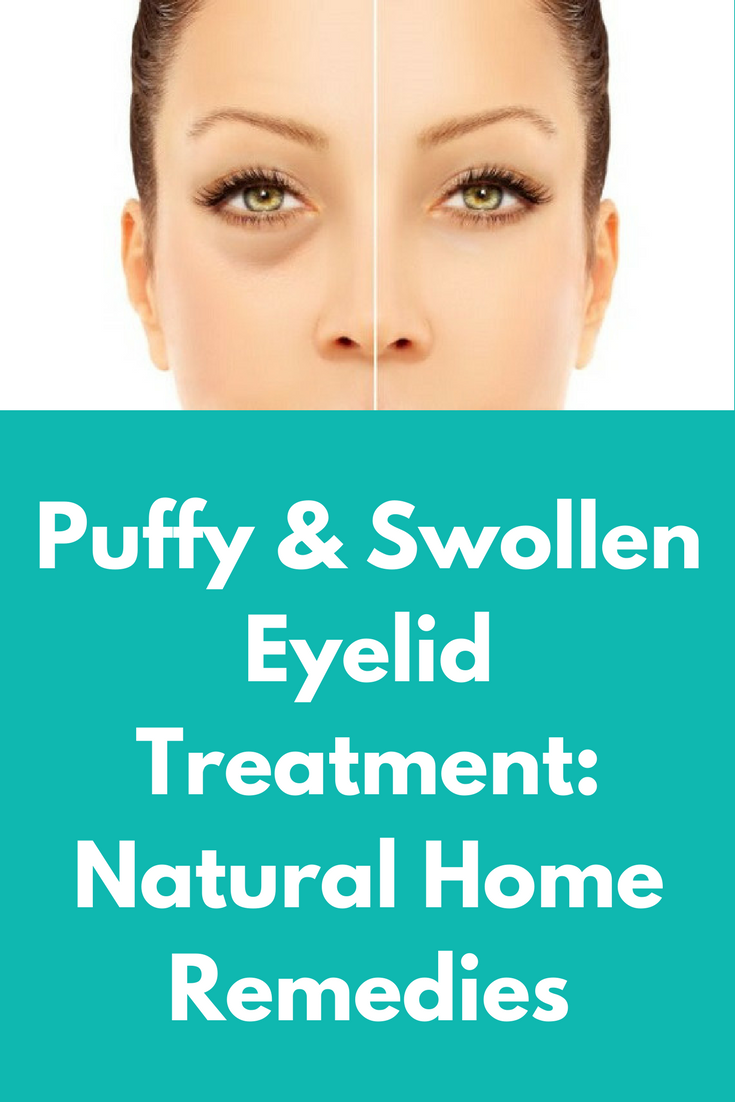
Diagnosis of Eyelid Swelling
Visual Examination
To start the diagnosis, the doctor performs a visual examination of both eyelids of the face and determines whether only one or both eyes are swollen. The doctor also evaluates possible symptoms associated with eyelid edema, such as redness, itching, soreness, and others.
Eye pressure measurement
In cases where eyelid swelling is due to eye problems, the doctor may measure eye pressure to check for glaucoma or other eye conditions.
Blood and urine tests
If a doctor suspects eyelid swelling may be due to other conditions in the body, such as heart failure or kidney failure, a blood and urine test may be ordered to check for abnormalities.
Ultrasound
In cases where the physician cannot determine the cause of the eyelid swelling as a result of an examination for some reason, an ultrasound may be ordered to identify the possible causes of the swelling by examining the area in more detail.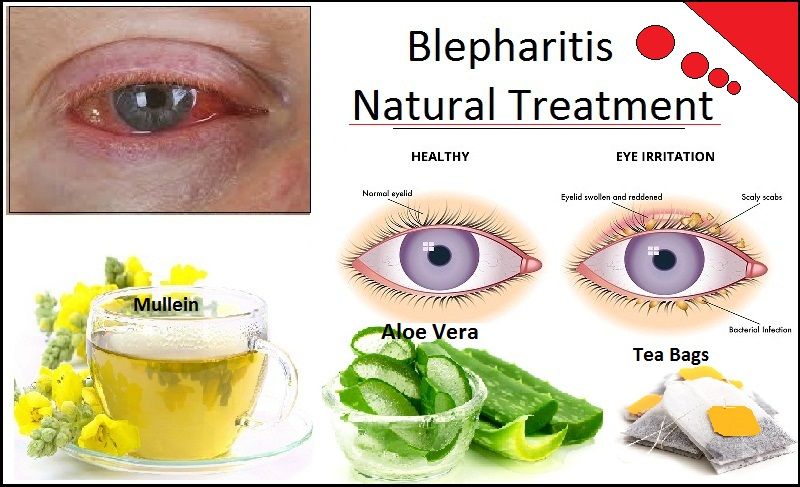
Computed tomography
In some situations, it may be necessary to perform a CT scan, which provides more information about the condition and structure of the tissues of the eye and eyelid, and can help the doctor determine the cause of swelling of the eyelid.
How to avoid swelling of the eyelid?
Eyelid edema is an unpleasant condition that worsens the appearance and can cause discomfort. However, there are a few things you can do to avoid it: Eat foods rich in vitamins and minerals that will help strengthen blood vessels and improve blood circulation. Limit salt intake to reduce fluid retention in the body.
 To prevent swelling, it is recommended to sleep on your back.
To prevent swelling, it is recommended to sleep on your back.Following these simple rules will help you avoid swelling of the eyelid and maintain healthy skin around the eyes.
How to treat eyelid edema
Eyelid edema can be caused by various causes, so proper treatment should always begin with a consultation with your doctor. He will determine the cause of the edema and select the most effective method of treatment.
If the swelling is caused by an allergy, then the most effective treatment is to take antihistamines. You can also use capillary constrictors to help reduce swelling and improve circulation around the eyelids.
In some cases eyelid edema may be due to kidney or heart problems. In this case, treatment should be aimed at eliminating the underlying disease.
If swelling of the eyelids occurs, salty and fatty foods should be avoided, and fluid intake should be limited. It is also recommended to increase your physical activity in order to improve blood circulation in the eyelid area.
- Use the most effective treatment your doctor recommends
- Apply ice to your eyelid to reduce swelling
- Take antihistamines for allergies
- Limit salty and fatty foods 9 0050
- Increase your physical activity
We treat eyelid edema with folk remedies!
Remedy #1: Parsley Leaves
Parsley Leaves contain many beneficial substances that help to eliminate swelling of the eyelids. Apply a small bunch of fresh parsley leaves to your eyelids for 10-15 minutes. This remedy has a diuretic and anti-inflammatory effect and helps reduce swelling.
Remedy #2: Green tea compresses
Green tea has a strong anti-inflammatory effect. To prepare compresses, brew green tea and cool it. Pour ice cubes into a cloth and apply to the eyelids for 10-15 minutes. This remedy improves circulation and reduces swelling.
Treatment #3: Vodka and Honey Wrap
Honey is anti-inflammatory and moisturizing, while vodka is anti-inflammatory and cooling. Mix them in equal proportions and moisten gauze swabs in the resulting liquid. Apply to eyelids and leave on for 20-30 minutes. This tool helps to eliminate swelling and improves the condition of the skin around the eyes.
- Important to remember!
- Home remedies can help, but they do not replace specialist advice.
- If any drug is not well tolerated, treatment should be stopped immediately.
- Before using folk remedies, check for an allergic reaction.
- Important to remember!
How to quickly eliminate swelling of the eyelid
Symptoms of swelling of the eyelid
Various causes can cause swelling of the eyelid, the symptoms of which include:
- swelling of the eyelids
- feeling of heaviness in the eyelids
- limited movement of the eyelids
- irregular contour of the eyelids
Eyelid edema treatment methods
The following methods can be used to quickly reduce eyelid swelling:
- Applying cold – ice or an eye mask can constrict blood vessels and reduce eyelid swelling.

- Correct daily routine – lack of sleep and fatigue can contribute to eyelid edema.
- Applying moisturizing creams – this helps to tone the skin and reduce swelling.
- Common bacterial infections can cause eyelid swelling, so treating the infection can help reduce swelling.
- Applying cold – ice or an eye mask can constrict blood vessels and reduce eyelid swelling.
Possible complications of eyelid edema
Eyelid edema can lead to several complications that must be taken into account and be prepared for if they occur.
- Visual impairment: If swelling of the eyelid leads to severe swelling of the eyeballs, it can slow down blood circulation in the eyes, which can lead to visual impairment.
- Respiratory problems: Eyelid edema can cause respiratory problems if it affects the upper eyelid.
- Infection: If the cause of eyelid swelling is due to an infection, the symptoms of swelling may get worse and cause more serious problems.

- Psychological problems: Edema of the eyelid can lead to psychological problems due to changes in appearance, especially in people whose appearance has been characterized by the absence of edema for a long time.
If you notice swelling of the eyelid, you should immediately consult a doctor to avoid any complications. Your doctor can prescribe medication to prevent possible problems and give you care tips to avoid swelling in the future.
Eyelid care tips for edema
Eyelid edema is an extremely unpleasant phenomenon that requires special care. First of all, you should pay attention to the hygiene of the eyelids. Gently wash them with a special makeup remover. Do not rub the skin, otherwise you can only aggravate the situation.
To moisturize your eyelids, use special eye creams with soothing ingredients such as aloe or cucumber. Apply them with gentle movements, without rubbing the skin.
If swelling persists, see a specialist. He will help determine the cause of the swelling and prescribe the necessary treatment. Do not self-medicate, so as not to aggravate the situation.
He will help determine the cause of the swelling and prescribe the necessary treatment. Do not self-medicate, so as not to aggravate the situation.
- Take care of eyelid hygiene.
- Do not rub the skin.
- Use cold compresses.
- Moisturize your skin with eye creams.
- Seek medical attention if swelling persists.
Related videos:
Q&A:
What is eyelid edema?
Eyelid edema is swelling of the tissues around the eye caused by fluid accumulation. This can be the result of various problems such as allergies, infections, injuries, or medical conditions.
What are the symptoms associated with eyelid edema?
Symptoms of eyelid edema may include swelling around the eyes, puffiness or redness of the eyes, itching or burning of the eyes, decreased vision, and disturbed sleep. In some cases, lacrimation or discharge of fluid from the eye is possible.
In some cases, lacrimation or discharge of fluid from the eye is possible.
What are the causes of eyelid edema?
Problems that cause swelling of the eyelid may be due to allergies to dust, smoking, infection, problems sleeping at night, adverse effects of medications, or lifestyle problems in general. In more rare cases, the causes may be related to a malfunction of the lymphatic system, a disease of the thyroid gland or the cardiovascular system.
How can eyelid edema be treated?
Treatment for eyelid edema depends on its cause. If the cause is an allergy, then you should get rid of the allergen or take antihistamines. In case of infection, antibiotics may be required. If the swelling is caused by lifestyle, then you should stop smoking, increase the amount of sleep and exercise. In some cases, surgery may be required to correct the swelling.
How can eyelid edema be prevented?
To prevent swelling of the eyelids, shower regularly, use quality cosmetics to care for the skin around the eyes, and avoid smoking and high salt in food.

 Affects the inner edge of the eyelid, including the oil glands
Affects the inner edge of the eyelid, including the oil glands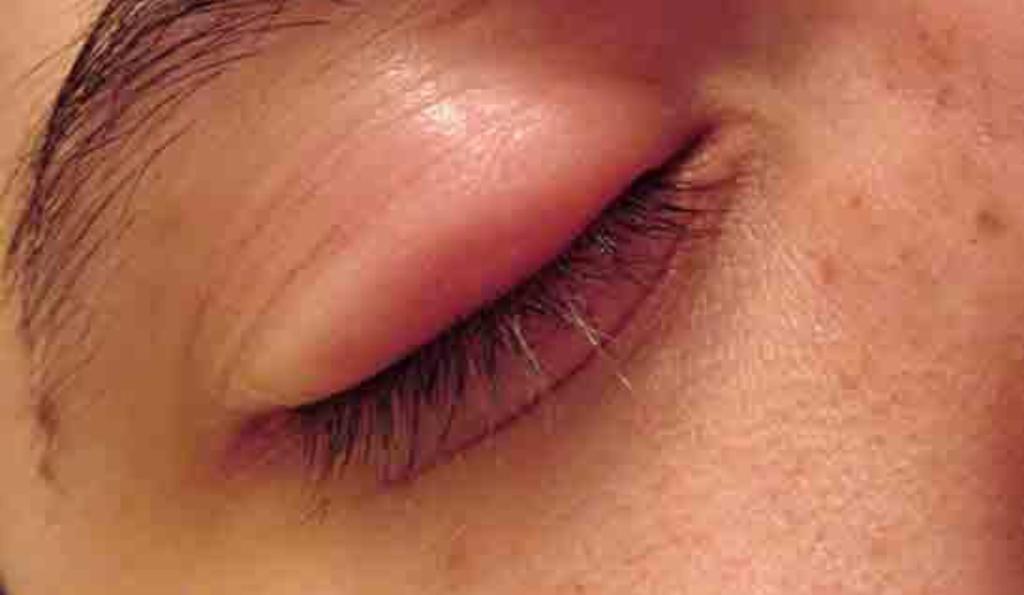 Allergy shots and prescription medicines
Allergy shots and prescription medicines 7 How to treat eyelid edema
7 How to treat eyelid edema
